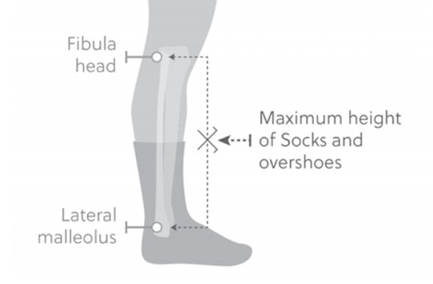The UCI has added sock height and aero material requirements to the 2019 rulebook
The UCI states that “No clothing may include self-supporting elements or rigid material when not worn. Furthermore, textiles must maintain their original texture. Clothing may not be altered in such a way that form constraints are integrated.”
The UCI introduces new regulations each year, but one new regulation for 2019 is likely to have a significant impact on professional cycling as the governing body attempts to reign in the ever-growing height of riders’ socks.
Prior to this change, Rule 1.3.033 stated that “The socks and shoe covers used in competition must not extend above the middle of the leg, a vague measure that allowed for a wide range of interpretations, ranging from mid-calf to almost knee-high.

The UCI clarified in the October 15, 2018, amendments that “socks and overshoes must not exceed half the distance between the lateral malleolus and the fibula head in terms of height,” and provided a pictorial representation of how to measure the height.
It is unknown if riders will have to perform a jig before races to have their socks measured.
UCI has also restricted the elbow rests on road time trial and track pursuit bikes to two parts, with elbow rests being permitted only if there are also extension parts. Any part of the bike other than the 12.5cm wide or long rest can rise or fall by only 15 degrees, and the elbow rest must be at least 10cm away from the end of the extensions.
The UCI is introducing a re-write to rule 1.3.033 on March 4, 2019, as part of other changes in the portion pertaining to aerodynamic fabrics.
Clothing that alters the body or reduces air resistance is no longer permitted.
The ‘vortex’ suit worn by Chris Froome in 2017 raised some concerns about the use of aerodynamic textures. New rules appear to restrict the use of fabrics by limiting profile changes to one millimeter at most.
The fabric may only be rough due to threading, weaving, or fabric assembly.
The UCI states that clothing must maintain the original texture of the textile and may not be altered to accommodate shape constraints when not in use. Self-supporting elements or rigid parts must not be present when the garment is not being worn

